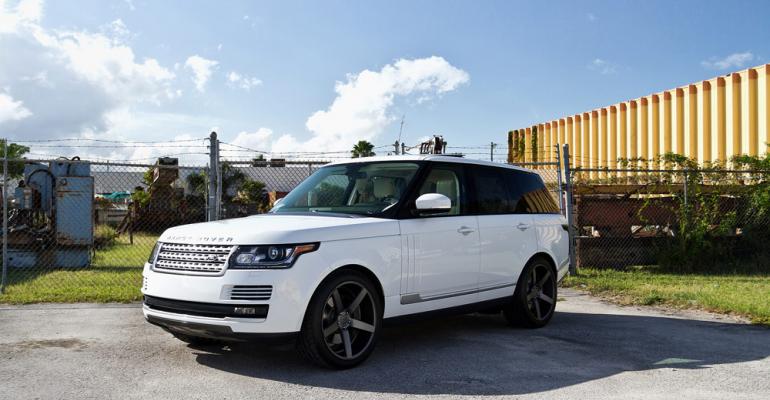TRAVERSE CITY, MI – The only way for Jaguar Land Rover to meet fuel-economy goals with its big cars and SUVs is to make them as light as small cars, says Mark White, the man in charge of JLR’s vehicle bodies.
For the U.K.-based auto maker, that means switching materials from steel to aluminum, and the new Range Rover Sport is the sixth all-aluminum model from the company since the ’02 Jaguar XJ.
JLR wanted to use its existing facilities – press, paint and body shops – and switching materials from steel to aluminum fit the bill.
For the current Range Rover model, the change is easily measured. The old one in steel weighed 5,688 lbs. (2,580 kg), while the aluminum vehicle tips the scales at 4,762 lbs. (2,160 kg). The body is more than half the weight of the vehicle, when trim, mechanical parts and closures are added, he says.
The Range Rover body is 441 lbs. (200 kg) lighter than its predecessor and the chassis is 220 lbs. (100 kg) lighter. Another 265 lbs. (120 kg) was saved because the lighter body and chassis permit downsizing of the engine, brakes, fuel tanks and other systems.
White says the ride and handling and noise, vibration, harshness are all improved.
The changes result in a 25% fuel-economy improvement. In the case of the Range Rover Sport, the old one was emitting 230 g/km of carbon dioxide. With a diesel-hybrid powertrain to be launched later this year, the new one will be at 165 g/km. The hybrid powertrain also will be available on the Range Rover.
White, who was made responsible for the body-in-white at Jaguar in 1998, now is in charge of the Body Complete Business Unit, which treats the body as a system, rather than as a collection of components.
In addition to the on-road savings, JLR is working on its lifecycle CO2 emissions, calculating, for example, that virtual testing of the new Range Rover saved 750,000 miles (1.2 million km) of test driving and 320 tons (290 t) of CO2.
Another aspect is the use of recycled aluminum, which is now at more than 50%. Working with supplier Novelis, recycled aluminum content will increase to 75%-80% by 2020.
Unlike General Motors, which prefers spot welds for its aluminum joining, JLR uses only bonding and rivets. The steel Range Rover had 6,000 spot welds, says White, while the aluminum one has 3,800 rivets.
White says the goal for 2030 is to reduce the weight of JLR’s SUVs from 4,400 lbs. (2,000 kg) to 3,300 lbs. (1,500 kg) and that of its large sedans from 3,300 lbs. to 2,200 lbs. (1,000 kg).
“That won’t happen just by using light metals,” he says, but will require part reduction and other efficiencies. Already JLR uses some magnesium. As for composites, sheet molding compounds and natural fibers, “you will see more in the future.”





